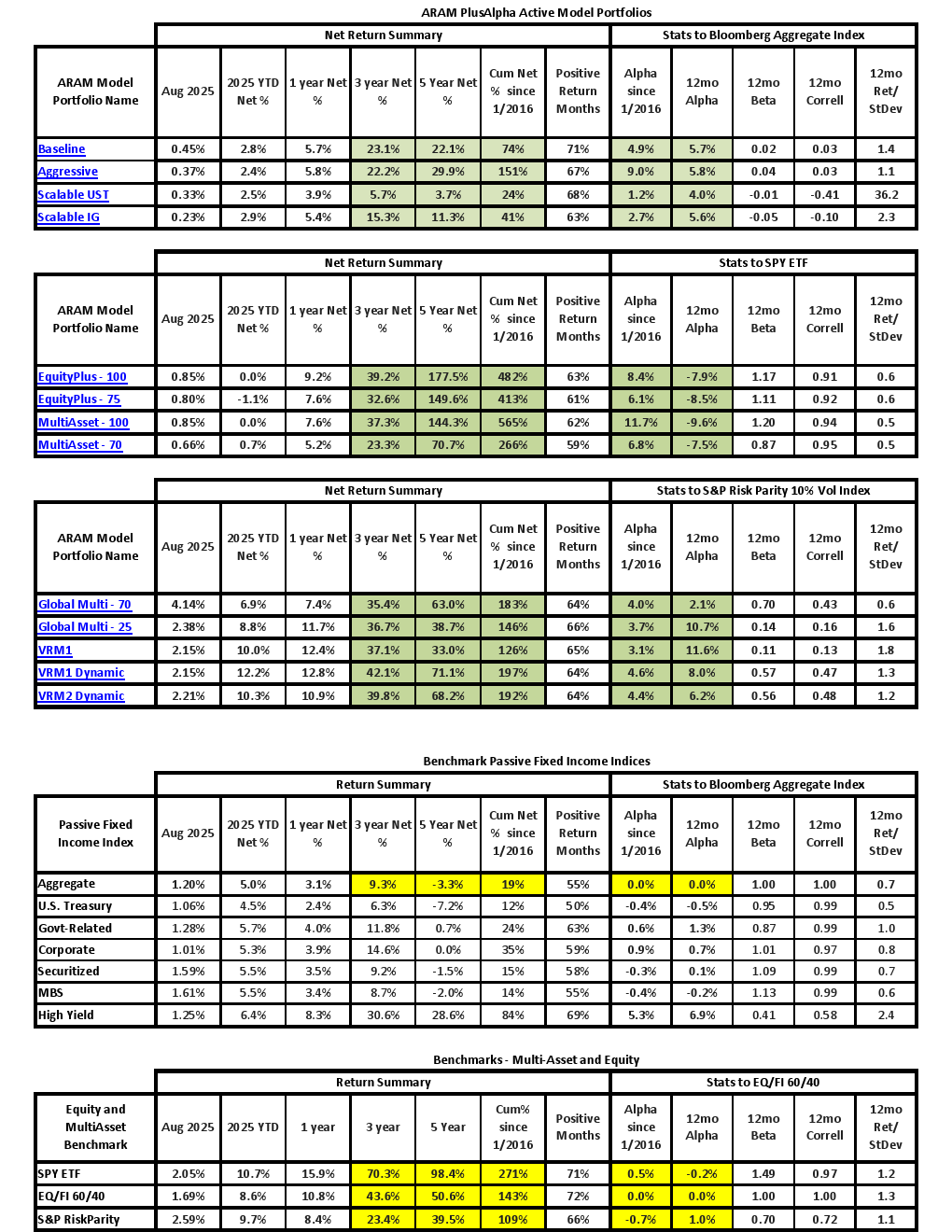Unlocking the Potential
Summary of Active Model Portfolio performance - Aug 2025

Direct Risk Targeting + Systematic Active Rebalancing = Alpha
Direct Risk Targeting is a new way to construct Active Fixed Income portfolios. It is an evolution of Modern Portfolio Theory (MPT) introduced by Harry Markowitz in his seminal 1952 paper "Portfolio Selection".
We modify Markowitz Portfolio Optimization's 2-step process and add 1 more step.
- Identify Market Risk using a Benchmark Security or Index, Portfolio, or Macro input, and also construct a covariance matrix based on the historical risk of securities to be used – we select these using parameters for liquidity, sector, etc
- ARAM’s innovation: Our eCIO algorithm computes a “Direct Risk Target” based on the Market Risk input from Step 1, which imposes an Environment Risk Suitability condition to the portfolio’s target risk. This is based on our experience and can differ significantly than the computed Market Risk input.
- The Direct Risk Target is then used as the input to an optimizer to construct an Optimal Portfolio and generate weights for security selection and portfolio construction
We systematically rebalance periodically, repeating Step 1 for subsequent periods, to stay ahead of Risk decay, making our Model Portfolios able to respond to Risk and Regime changes, resulting in Activeness that is quantifiable.
Fact Sheets for the Model Portfolios are on our Documents page.
Available on Schwab iRebal, InterActive Brokers, and as Direct Indices on indexone.io
on Fixed Income Risk, Behavioral Biases and Market Structure
37 years of experience in Fixed Income, in Research, Trading, Sales and Asset Management, including Trading with 500+ Invesment Managers the 1990s
1987-2024: Continuously solving Risk and Asset Pricing problems using Macro Economics
2014: Studies of Market Structure in Fixed Income and MBS – identification of Shortcomings and Biases; PerfectVision dream is formed
2016-2018: Papers on Market Structure, including letters to the SEC
2016: Solution to Market Structure limitations – AGG Plus Alpha (Mutual Funds)
2017: Extended to ‘Retail version’ – using ETFs
2017-2023: Solutions for other applications: REITS, High Yield, Dividend Stocks, OCIO, Asset Allocation, Factor Equity portfolios, and more
2023: Gen 2 of Agg Plus Alpha created – using ETFs - improvements in Risk Targeting
2024: Gen 3 Plus Alpha created – further improvements in Risk Identification and Risk/Return tradeoffs
